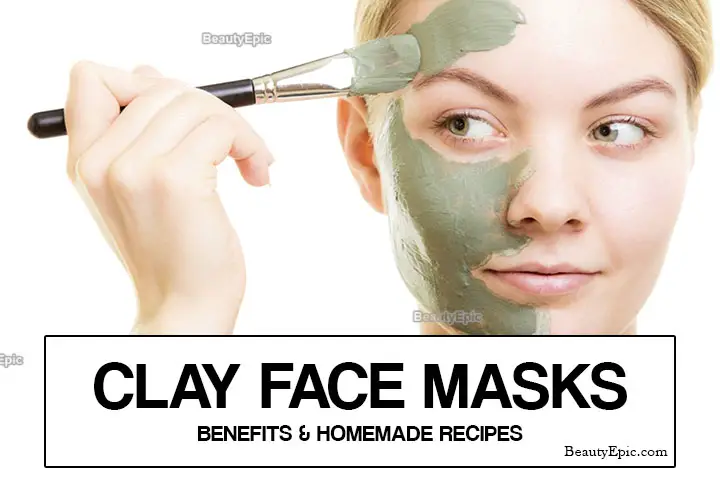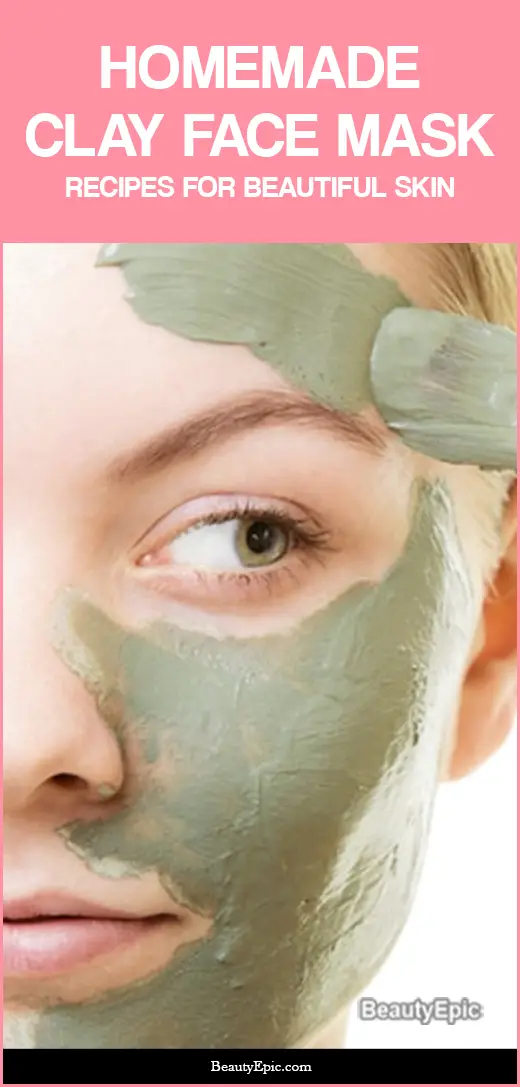
Important: This article is for informational purposes only. Please read our full disclaimer for more details.
Clay is one element which has been included in many beauty recipes for several centuries. No doubt, it is capable of providing wonderful skin. However, many people get confused as to what type of clay might be the best for their skin and what ingredients can be used with it.
Here is a little guide that will help you with using clay to prepare clay mask. One important thing that you need to note is that you should not use metal while preparing your clay mask. You can use wooden, plastic, or glass instruments for maintaining the effective and potent properties of clay.
Article Contains
1. Bentonite Clay
This is easy to find and is quite common. When used it can help in pulling out the impurities and toxins from your skin and make it appear glowing and healthy.
Things Required:
- Bentonite clay and
- Filtered water
How to Do:
- In order to make the face mask, you will need equal parts of clay and filtered water.
- Mix it well to create a paste. Now, apply the paste on the bug bites, blemishes, or cuts. If you have dry skin then you can use jojoba oil rather than using water for the mask
- You can use the paste to apply on your neck and face. Leave it on for 15 minutes.
Best Time to Apply: Morning.
No of Repetitions: Do this once to twice in a week.
[ Read: Homemade Face Masks for Acne ]
2. Moroccan Red Clay
If you have acne prone and oily skin then this is the best clay for you. It comes from Atlas Mountain that is found in Morocco. It helps to combat clogged pores and blackheads.
Things Required:
- Moroccan Red Clay,
- Rose water, and
- Avocado
How to Do:
- To make the face mask, you will require two tablespoons of Moroccan Red Clay, three tablespoons of rose water, and one tablespoon of mashed avocado.
- Mix the three ingredients to form a paste. You can use a brush or your finger to apply it on the acne prone areas.
- When you see the mask lightening, wash it off with lukewarm water.
Best Time to Apply: Morning.
No of Repetitions: Repeat this process every alternate day.
[ Read: Turmeric Face Mask Recipes ]
3. White Kaolin Clay
Most of the time, white kaolin clay is recommended to maintain balance with oily skin. It can be found in moist climates in the soil.
You will find this in several beauty products like deodorants and scrubs due to its drying properties.
Things Required:
- White kaolin clay,
- Aloe vera juice,
- Filtered water,
- Geranium essential oil.
How to Do:
- For the recipe, you will need two tablespoons of white kaolin clay, one teaspoon of aloe vera juice, one teaspoon of filtered water, and 2 drops of geranium essential oil.
- Mix the ingredients together. If you want the mask to be thinned out then add more water.
- Apply it on your face and leave it for 10 minutes. Wash it off using warm water and follow up with a moisturizer.
Best Time to Apply: Morning
No of Repetitions: Do this twice in a week.
[ Read: Homemade Skin Tightening Face Masks ]
4. French Green Clay
It is exfoliating and detoxifying and can be used for oily to normal skin.
Things Required:
- French Green Clay,
- Apple Cider Vinegar, and
- Essential Oil of your choice.
How to Do:
- For the face mask recipe, you need one tablespoon of French Green clay, two tablespoons of apple cider vinegar, and one drop of any essential oil.
- Mix the ingredients and apply it on your face and neck.
- Leave it for 10-15 minutes. Wash it off using warm water.
Best Time to Apply: Morning.
No of Repetitions: Repeat it twice in a week to get the best results.
5. Fuller’s Earth
This clay is popular for its healing properties. It is excellent for treating oily skin and pigmentation.
Things Required:
- Fuller’s Earth,
- Honey,
- Rose Water.
How to Do:
- For the recipe, you will need two teaspoons of Fuller’s Earth, one teaspoon of honey, and one tablespoon of rose water.
- Combine the ingredients in a bowl and apply for about 10 minutes.
Best Time to Apply: Morning.
No of Repetitions: 2 to 3 times in a week.
You Might Also Like:
















